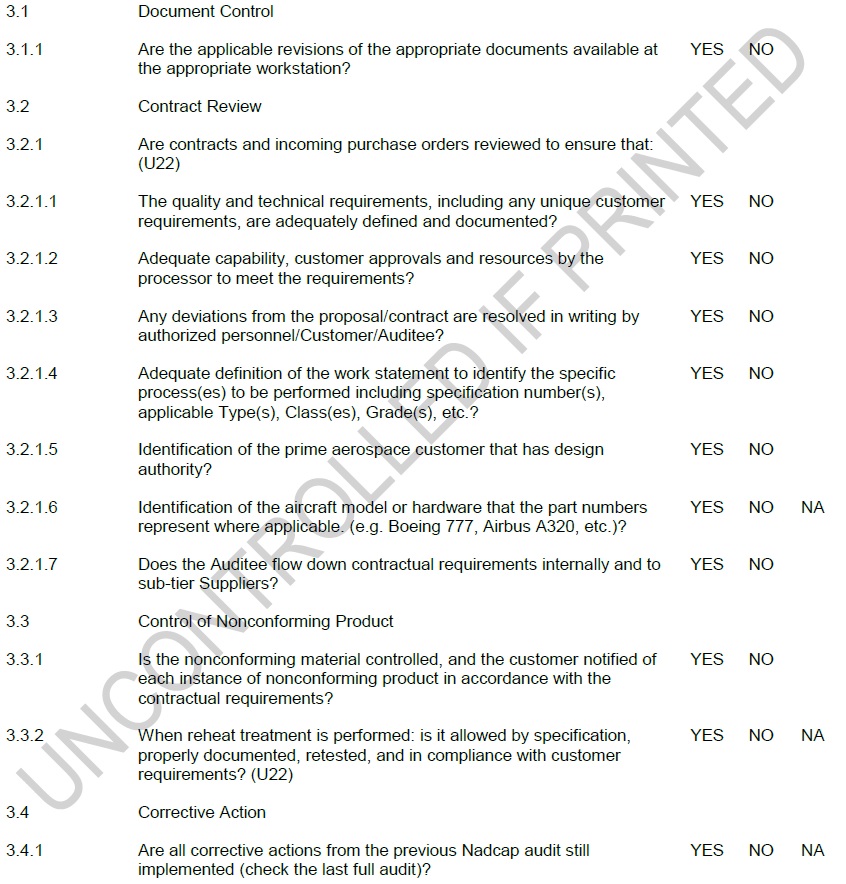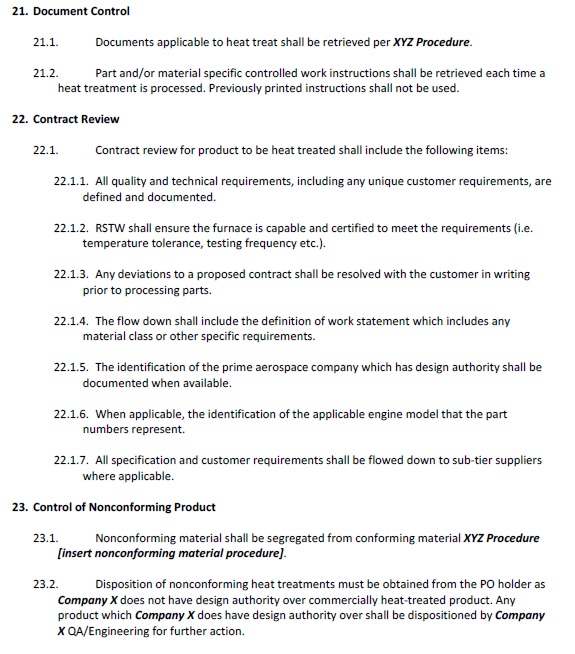
Whether commercial heat-treating or captive, procedures are essential to the production of conforming product and its repeatability. Procedures can be challenging to write at times as, if we are too close to the process, we may feel that some items in procedures are obvious. Still, it is also difficult to assign authorship to an employee who is not as familiar with the process as, say, a process engineer.
In this article, we will examine a technique to writing heat-treat procedures that not only accounts for the specific requirements as they apply to a facility but up to the Nadcap level.
Applicability
Let’s first establish customer and specification applicability. As an example, if processing to internally developed parameters that have no specification flow-down, but are Nadcap-approved, you would need to include both Nadcap checklist items as well as requirements as they apply to your own internally developed (and, possibly, customer-approved) process in the procedure. On the other hand, if processing to an AMS/SAE specification that is flowed down to via customer PO/Print and is Nadcap-approved incorporation of internal process requirements, AMS/SAE requirements as well as Nadcap checklist items would need to take place.
 These items are typically identified during the contract review process. It is important to have a clear line-of-sight to your specific requirements as they apply to all hardware processed. This can enable suppliers to establish general higher-level procedures in place of low-level requirement-specific procedures (i.e. one procedure for, say, Rolls Royce parts and another for GEAE parts in heat treat).
These items are typically identified during the contract review process. It is important to have a clear line-of-sight to your specific requirements as they apply to all hardware processed. This can enable suppliers to establish general higher-level procedures in place of low-level requirement-specific procedures (i.e. one procedure for, say, Rolls Royce parts and another for GEAE parts in heat treat).
I will use an example of a common scenario to begin this description. Let’s assume Company X heat treats 410 stainless steel in accordance with the customer PO/Print which flows down AMS2759/3. With AMS2759/3, Company X is also required to maintain Nadcap-approved in heat treat.
General Requirement Accountability
A simple start to this would be to funnel the requirements into three general procedures; a general heat-treat procedure, a general pyrometry procedure, and a general hardness testing procedure. This will allow all the requirements of each process to be in a single location when future changes are necessary.
The general heat-treat procedure should include the heat-treat process requirements flowed down in AMS2759/3 (and, in this case, AM2759) as well as AC7102. The pyrometry procedure would include applicable requirements from AMS2759/3 (AMS2759) as well as AMS2750. The hardness testing procedure would include the requirements of ASTME-18.
The key is the structure of the procedures. During my years consulting with companies, I’ve seen procedures that appear to have had requirements inserted due to audit findings and/or specification changes with no real organization or flow. I’ve also seen procedures that essentially plagiarize the parent specification/checklist. Of course, I would strongly recommend against this approach, as it does not show an auditor how a supplier has accounted for specific requirements within the specification.
An approach to writing procedures may be to start, say, the AC7102 Nadcap checklist. As stated before, this would go into the general heat-treat procedure. The flow could mimic the flow of the checklists to ensure a supplier has captured all the requirements within AC7102. (See example in Figures 1 and 2).


Comparison of Checklists vs. Procedure
Each major topic within the checklist has its own paragraph within the procedure describing how that specific supplier addresses the checklist requirement.
This same approach can be used for specification requirements (i.e. prime, SAE/AMS, etc.). This may include tables showing temperature requirements for specific materials as well as specific process requirements as they are described within the applicable specification.
Summary
Drafting internal procedures in this way gives suppliers the organization needed to clearly show conformance to both auditors as well as employees who need to conform to the procedures. This system also allows for insertion of new requirements as both checklists and specification revisions are released.

























